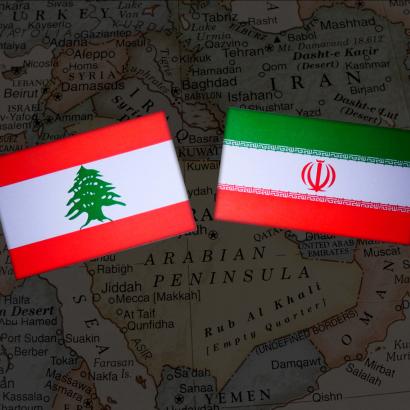
Title: Hezbollah’s Tactical Discourse Amid Crisis: Recent Research Unveils a Deliberate Shift in Communication
An innovative study employing sophisticated text analysis has revealed surprising trends in Hezbollah’s media approach, challenging traditional perceptions of political behavior in times of national emergencies. Featured in the journal Nationalism and Ethnic Politics, research conducted by Japanese academic Kota Suechika demonstrates that Hezbollah’s official discourse turns increasingly aggressive towards political adversaries in Lebanon during national crises, rather than being conciliatory or fostering unity.
The carefully executed study examined more than 64,000 articles from Al-Manar, Hezbollah’s media platform, spanning from 2017 to 2023. This six-year timeframe encapsulates a tumultuous period in Lebanese history characterized by escalating financial turmoil, widespread protests, and devastating incidents such as the Beirut port explosion.
Reconceptualizing Crisis Communication
Professor Suechika from Ritsumeikan University in Kyoto used a quantitative text analysis method to trace and measure trends in Hezbollah’s political messaging. Unexpectedly, the findings indicated that during periods of national turmoil—particularly during the 2019 anti-government protests and the 2020 Beirut port explosion—Hezbollah adopted markedly critical language towards its Lebanese competitors.
This contradicts the assumption that political figures would encourage solidarity during crises. Rather, Hezbollah utilized national emergencies as arenas for political contests, seeking to shift blame and undermine opposition groups, occasionally associating them symbolically with external adversaries such as Israel.
Calculated Discourse in a Sectarian Framework
Notable insights from the study comprise:
– An increase in critiques directed at rival Lebanese factions amid national emergencies, positioning Hezbollah as a responsible entity in tumultuous times.
– Greater use of polarizing terms—like “sectarianism” and “division”—to tie political opponents to both internal chaos and foreign meddling.
– A more conciliatory tone adopted following the March 2023 diplomatic thaw between Iran and Saudi Arabia, brokered by China.
– Softer rhetoric during parliamentary elections, a timeframe when cross-sectarian coalitions are pragmatically advantageous for Hezbollah.
– A shift back to confrontational language during post-election talks, especially in cabinet discussions where power-sharing conflicts escalate.
These noted transitions imply that Hezbollah’s communication is not ideologically fixed but instead highly reactive to domestic and regional power shifts.
“By utilizing quantitative text analysis, this research moves away from the often stagnant readings of Hezbollah through the frameworks of Islamism or sectarianism,” Suechika remarks. “Instead, it situates the group as a rational political entity maneuvering within the structural confines of Lebanon’s consociational democracy.”
Questioning Traditional Narratives
The investigation adds to a growing critique of what Suechika describes as “cultural essentialism”—the inclination to interpret Middle Eastern political actions strictly through a religious or sectarian lens. Instead, Hezbollah’s communication tactics are viewed as practical instruments aimed at sustaining organizational legitimacy and influence within a turbulent political landscape.
Lebanon’s consociational democracy—engineered to mediate sectarian interests among its Sunni, Shia, Christian, and Druze populations—frequently hampers decision-making and encourages clientelism rather than accountability. Suechika contends that Hezbollah’s tactical messaging adapts seamlessly within this institutional context.
Effects of the Iran-Saudi Thaw
One of the most striking changes highlighted in the study was Hezbollah’s moderated tone following the 2023 diplomatic mend between Iran and Saudi Arabia. Facilitated by China, this regional détente seemingly alleviated intra-Lebanese tensions linked to the proxy rivalry involving Iran (which backs Hezbollah) and Saudi Arabia (which supports various rival Lebanese factions).
In public comments during that period, Hezbollah’s leader Hassan Nasrallah praised the regional accord as a potential pivotal moment for Lebanon, even expressing optimism that it might resolve the country’s prolonged presidential election deadlock.
This indicates that Hezbollah’s internal rhetoric is influenced not only by local issues but also by broader geopolitical dynamics in the Middle East. Shifts in regional alliances are swiftly integrated into the organization’s media communications, underscoring how closely Lebanon’s political fortunes are tied to its neighbors.
Consequences for Lebanon’s Political Stability
While the research elucidates Hezbollah’s distinctive media practices, it also prompts reflection on the wider political framework. The findings conclude that Lebanon’s dysfunction cannot be attributed to the obstinacy of a single entity, but rather results from systemic problems inherent in Lebanon’s sectarian power-sharing system.
As Suechika asserts, Lebanon’s persistent crises “do not arise from Hezbollah’s rigid political position but from the structural shortcomings of consociational democracy itself.”
With Lebanon grappling with escalating challenges stemming from economic collapse, infrastructure deterioration, and political inertia, understanding how political figures like Hezbollah manipulate narratives for strategic purposes is crucial. Observing such rhetoric may prove valuable in anticipating political transitions and discerning whether unity or discord is forthcoming during future crises.
Towards Broader Exploration
Although this study centers on Hezbollah, it raises an essential inquiry: Do other Lebanese political factions also…